Canon EOS 50D
-
-
Written by Gordon Laing
Canon EOS 50D resolution comparison
Canon EOS 50D results continued…
Outdoor resolution / Studio resolution / 50D vs 40D Noise / 50D vs D90 Noise / Noise Reduction
| Support this site by shopping at Amazon | |||||||||||||||||||||||||||||||||||||||||||||
 |
To measure and compare the Canon EOS 50D’s resolving power we photographed the Enhanced Digital Camera Resolution Chart with it and a number of rival cameras, each using their best quality JPEG and default image tone and sharpening settings. Each lens was tested at every aperture setting and the best result selected for this page. The crops are taken from the original images, saved as High Quality JPEGs in Photoshop CS2 and presented here at 100%. Each number represents 100 lines per picture height (lpph), so a figure of 20 means a resolution of 2000 lpph. |
In terms of resolving power, the Canon EOS 50D delivers 2350 and 2400 lpph of horizontal and vertical resolution respectively when equipped with the EF-S 18-200mm IS kit lens. Fit a higher quality prime lens like the EF 85mm f1.8 and the 50D delivers higher resolution figures of 2450 lpph for both horizontal and vertical resolution. This places it comfortably ahead of the Canon EOS 40D which when equipped with the same EF 85mm f1.8 lens scored 1950 and 2100 lpph of horizontal and vertical resolution respectively. As you’d expect given their respective pixel counts, the Nikon D90 and D300 fall roughly in-between, with the D300 (and Nikkor DX 17-55mm f2.8) scoring 2250 and 2300 lpph of horizontal and vertical resolution respectively. So the EOS 50D has the potential to easily out-resolve the 40D, but to really exploit its high pixel density, you’ll need to equip it with decent optics. We found the EF-S 18-200mm IS may have been a very convenient general-purpose lens, but it did limit the ultimate resolution of the 50D. Given decent optics, the 50D is also capable of delivering higher resolutions if you shoot in RAW – you can see examples at the bottom of this page. Alternatively to see how it measures-up against the EOS 40D and Nikon D90 in terms of noise, head straight over to our Canon 50D High ISO page. |
Canon EOS 50D with EF 85mm f1.8 |
Canon EOS 50D with EF-S 18-200mm IS | |
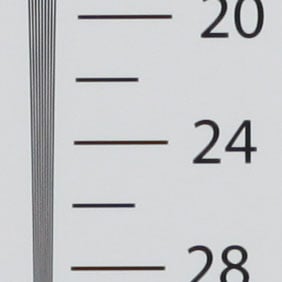 | 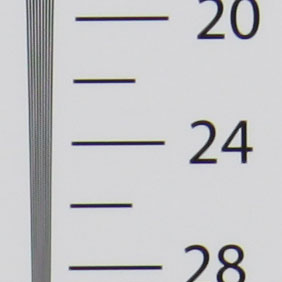 | |
2450 lpph, EF 85mm, f8, 100 ISO |
2350 lpph, EF-S 18-200mm IS at 35mm, f8, 100 ISO | |
Canon EOS-40D with Canon EF 85mm f1.8 |
Nikon D300 with Nikkor DX 17-55mm f2.8 | |
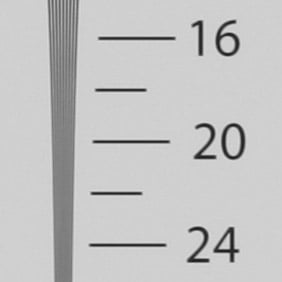 | 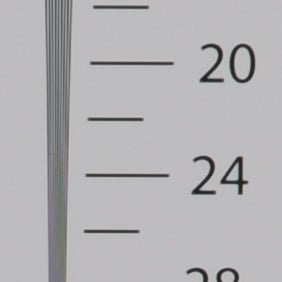 | |
1950 lpph, 85mm, f8, 100 ISO |
2250 lpph, DX 17-55mm at 35mm, f8, 100 ISO |
Canon EOS 50D with EF 85mm f1.8 |
Canon EOS 50D with EF-S 18-200mm IS | |
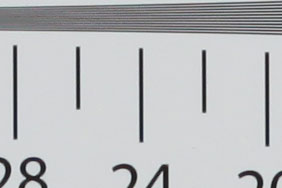 | 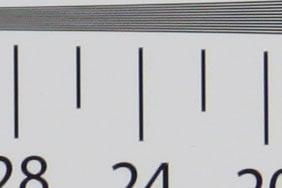 | |
2450 lpph, EF 85mm, f8, 100 ISO |
2400 lpph, EF-S 18-200mm IS at 35mm, f8, 100 ISO | |
Canon EOS-40D with Canon EF 85mm f1.8 |
Nikon D300 with Nikkor DX 17-55mm f2.8 | |
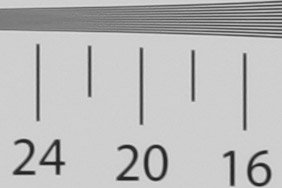 | 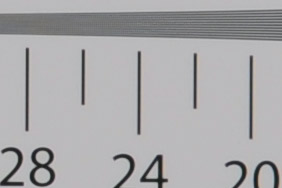 | |
2100 lpph, 85mm, f8, 100 ISO |
2300 lpph, DX 17-55mm at 35mm, f8, 100 ISO |
Canon EOS 50D Studio resolution: JPEG versus RAW
We photographed our test chart in the EOS 50D’s RAW plus Large Fine JPEG mode, allowing us to directly compare images created from exactly the same data. Below are crops taken from the original JPEG file alongside the RAW version, processed in Canon’s supplied Digital Photo Professional 3.5 software using the default settings (Sharpness of 3).
The RAW version using DPP’s default settings reveals cleaner and better defined details with a slight boost in resolution: we measured 2550 lpph for both horizontal and vertical resolution, making RAW the preferred choice for anyone who wants to make the most of the 50D. Now let’s check out the camera’s performance at different sensitivities in our Canon EOS 50D noise results page.
Canon EOS 50D JPEG with EF 85mm f1.8 |
Canon EOS 50D RAW with EF 85mm f1.8 | |
 | 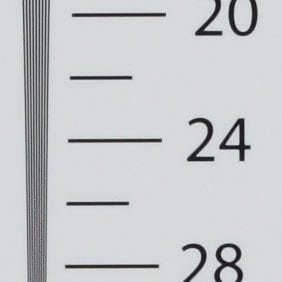 | |
2450 lpph, EF 85mm, f8, 100 ISO |
2550 lpph, EF 85mm, f8, 100 ISO |
Canon EOS 50D JPEG with EF 85mm f1.8 |
Canon EOS 50D RAW with EF 85mm f1.8 | |
 | 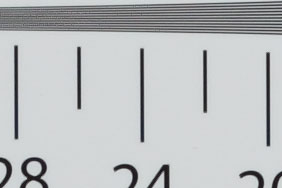 | |
2450 lpph, EF 85mm, f8, 100 ISO |
2550 lpph, EF 85mm, f8, 100 ISO |




